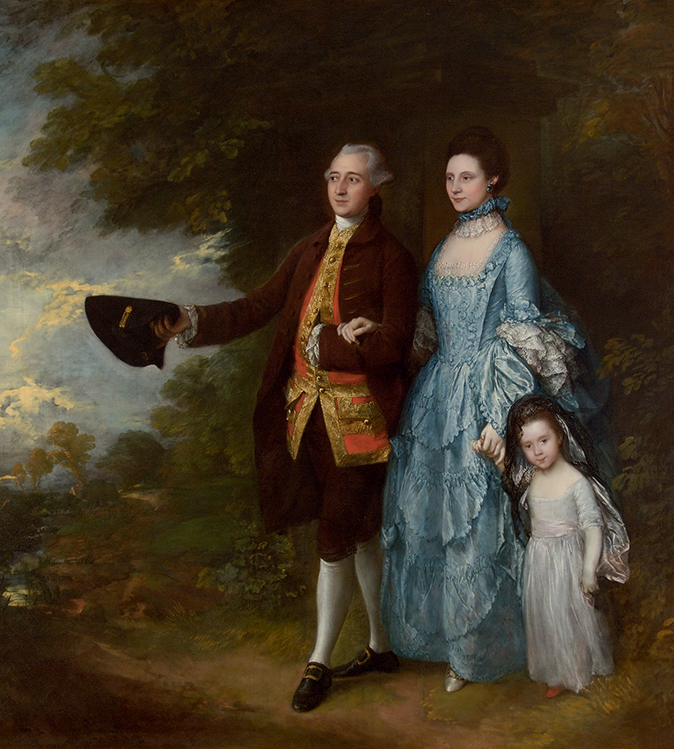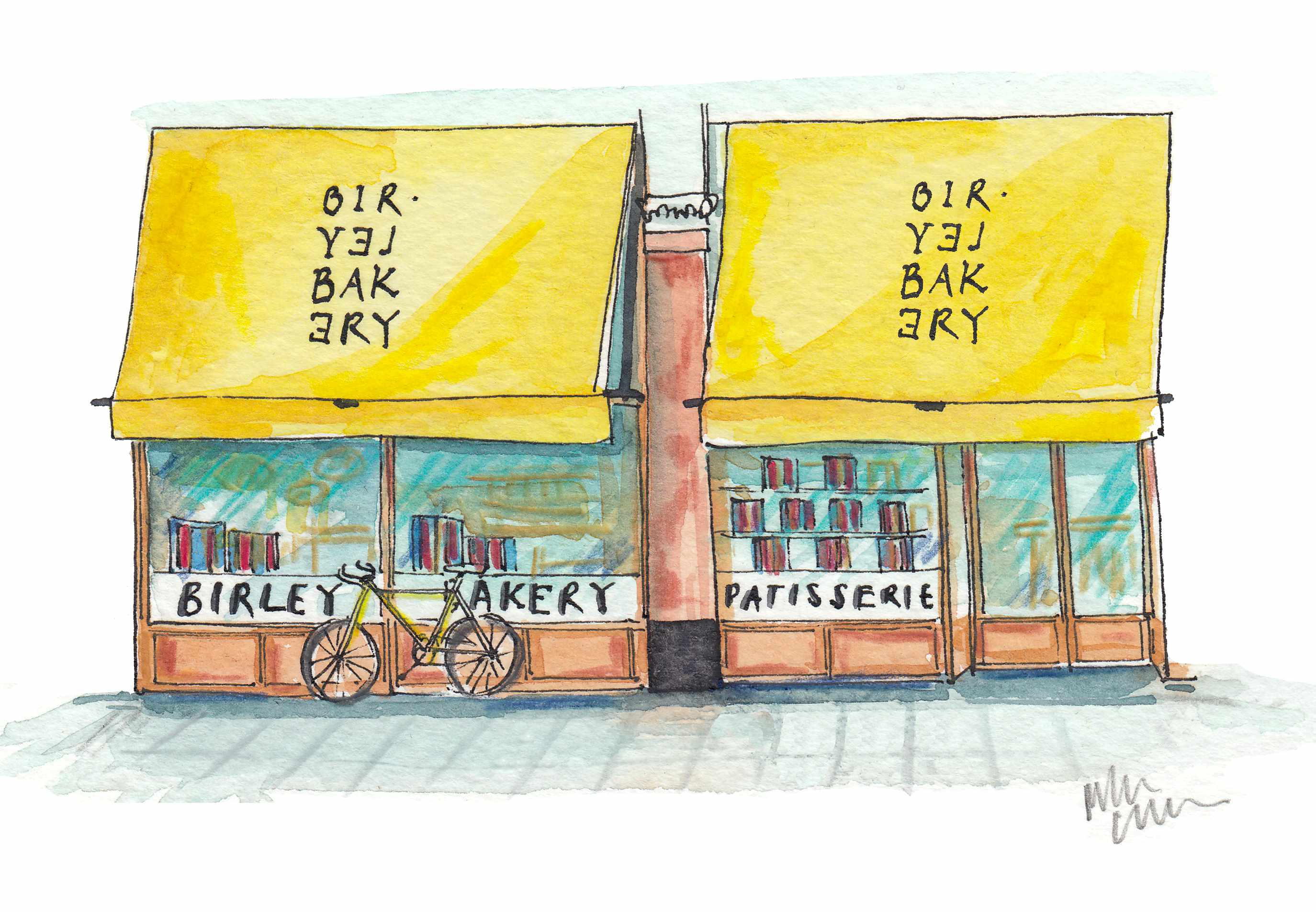My favourite painting: Jennifer Scott
'I find it inspiring to see how he blended these two elements to ensure both personal and client satisfaction'


The Byam Family, 1764, by Thomas Gainsborough (1727–88), 98in by 94in, The Holburne Museum, Bath.
Jennifer Scott says: Six years ago, in a lecture about Gainsborough, I described this as his most ambitious work. Now that I am lucky enough to spend most of my days in its company, I consider it to be one of the greatest paintings in the world. This exceptionally skilled artist professed to paint landscapes for pleasure and portraits for his profession. I find it inspiring to see how he blended these two elements to ensure both personal and client satisfaction! The result is a daringly large portrait (which he willingly updated after the couple, Mr and Mrs George Byam, had a daughter, Selina) set in a lyrical landscape.
Jennifer Scott is the Director of the Holburne Museum, Bath, where she has curated ‘Impressionism: Capturing Life’, until June 5
John McEwen comments on The Byam Family: When Queen Anne gave Bath her royal seal of approval with a visit in 1703, the city was run down. her initiative was quickly exploited by the gambling dandy ‘Beau’ Nash and another gaming entrepreneur, Capt Webster, who turned Bath into England’s answer to The Hague and Aix-les-Bains. By the time Thomas Gainsborough arrived from Ipswich in 1759, it had become today’s grand architectural showpiece, with all the diversions required to leaven the serious business of health improvement and profitable match-making.
David Garrick wrote: ‘I do this, & do that, & do nothing, & I go here and go there and go nowhere—Such is ye life of Bath.’ A popular pastime was to sit for a portrait. ‘It is well known, that no nation in the World delights so much in Face-painting, or gives so generous encouragement to it as our own,’ wrote Thomas Bardwell in 1756. During the 18th century, 160 artists worked in Bath, the majority portrait miniaturists. The most successful, like Gainborough, provided life-size portraits in oil on canvas and had a permanent show room as well as a ‘painting room’—the Italian word studio was a 19th-century introduction.
To dress fashionably was the rage, the clothes often more expensive than a picture. Gainsborough was well acquainted with the subject. his family was in the wool trade, his milliner sister joined him in Bath. The Byams typified prosperity: he was a beneficiary of an Antiguan sugar fortune, she the niece of the 1st Earl Bathurst. Gainsborough makes little Selina the touching counterpoint to adult splendour.
Sign up for the Country Life Newsletter
Exquisite houses, the beauty of Nature, and how to get the most from your life, straight to your inbox.
Country Life is unlike any other magazine: the only glossy weekly on the newsstand and the only magazine that has been guest-edited by HRH The King not once, but twice. It is a celebration of modern rural life and all its diverse joys and pleasures — that was first published in Queen Victoria's Diamond Jubilee year. Our eclectic mixture of witty and informative content — from the most up-to-date property news and commentary and a coveted glimpse inside some of the UK's best houses and gardens, to gardening, the arts and interior design, written by experts in their field — still cannot be found in print or online, anywhere else.
-
 'That’s the real recipe for creating emotion': Birley Bakery's Vincent Zanardi's consuming passions
'That’s the real recipe for creating emotion': Birley Bakery's Vincent Zanardi's consuming passionsVincent Zanardi reveals the present from his grandfather that he'd never sell and his most memorable meal.
By Rosie Paterson
-
 The Business Class product that spawned a generation of knock-offs: What it’s like to fly in Qatar Airways’ Qsuite cabin
The Business Class product that spawned a generation of knock-offs: What it’s like to fly in Qatar Airways’ Qsuite cabinQatar Airways’ Qsuite cabin has been setting the standard for Business Class travel since it was introduced in 2017.
By Rosie Paterson
-
 'As a child I wanted to snuggle up with the dogs and be part of it': Alexia Robinson chooses her favourite painting
'As a child I wanted to snuggle up with the dogs and be part of it': Alexia Robinson chooses her favourite paintingAlexia Robinson, founder of Love British Food, chooses an Edwin Landseer classic.
By Charlotte Mullins
-
 The Pre-Raphaelite painter who swapped 'willowy, nubile women' for stained glass — and created some of the best examples in Britain
The Pre-Raphaelite painter who swapped 'willowy, nubile women' for stained glass — and created some of the best examples in BritainThe painter Edward Burne-Jones turned from paint to glass for much of his career. James Hughes, director of the Victorian Society, chooses a glass masterpiece by Burne-Jones as his favourite 'painting'.
By Charlotte Mullins
-
 'I can’t look away. I’m captivated': The painter who takes years over each portrait, with the only guarantee being that it won't look like the subject
'I can’t look away. I’m captivated': The painter who takes years over each portrait, with the only guarantee being that it won't look like the subjectFor Country Life's My Favourite Painting slot, the writer Emily Howes chooses a work by a daring and challenging artist: Frank Auerbach.
By Toby Keel
-
 My Favourite Painting: Rob Houchen
My Favourite Painting: Rob HouchenThe actor Rob Houchen chooses a bold and challenging Egon Schiele work.
By Charlotte Mullins
-
 My Favourite Painting: Jeremy Clarkson
My Favourite Painting: Jeremy Clarkson'That's why this is my favourite painting. Because it invites you to imagine'
By Charlotte Mullins
-
 The chair of the National Gallery names his favourite from among the 2,300 masterpieces — and it will come as a bit of a shock
The chair of the National Gallery names his favourite from among the 2,300 masterpieces — and it will come as a bit of a shockAs the National Gallery turns 200, the chair of its board of trustees, John Booth, chooses his favourite painting.
By Toby Keel
-
 'A wonderful reminder of what the countryside could and should be': The 200-year-old watercolour of a world fast disappearing
'A wonderful reminder of what the countryside could and should be': The 200-year-old watercolour of a world fast disappearingChristopher Price of the Rare Breed Survival Trust on the bucolic beauty of The Magic Apple Tree by Samuel Palmer, which he nominates as his favourite painting.
By Charlotte Mullins
-
 My favourite painting: Andrew Graham-Dixon
My favourite painting: Andrew Graham-Dixon'Lesson Number One: it’s the pictures that baffle and tantalise you that stay in the mind forever .'
By Country Life